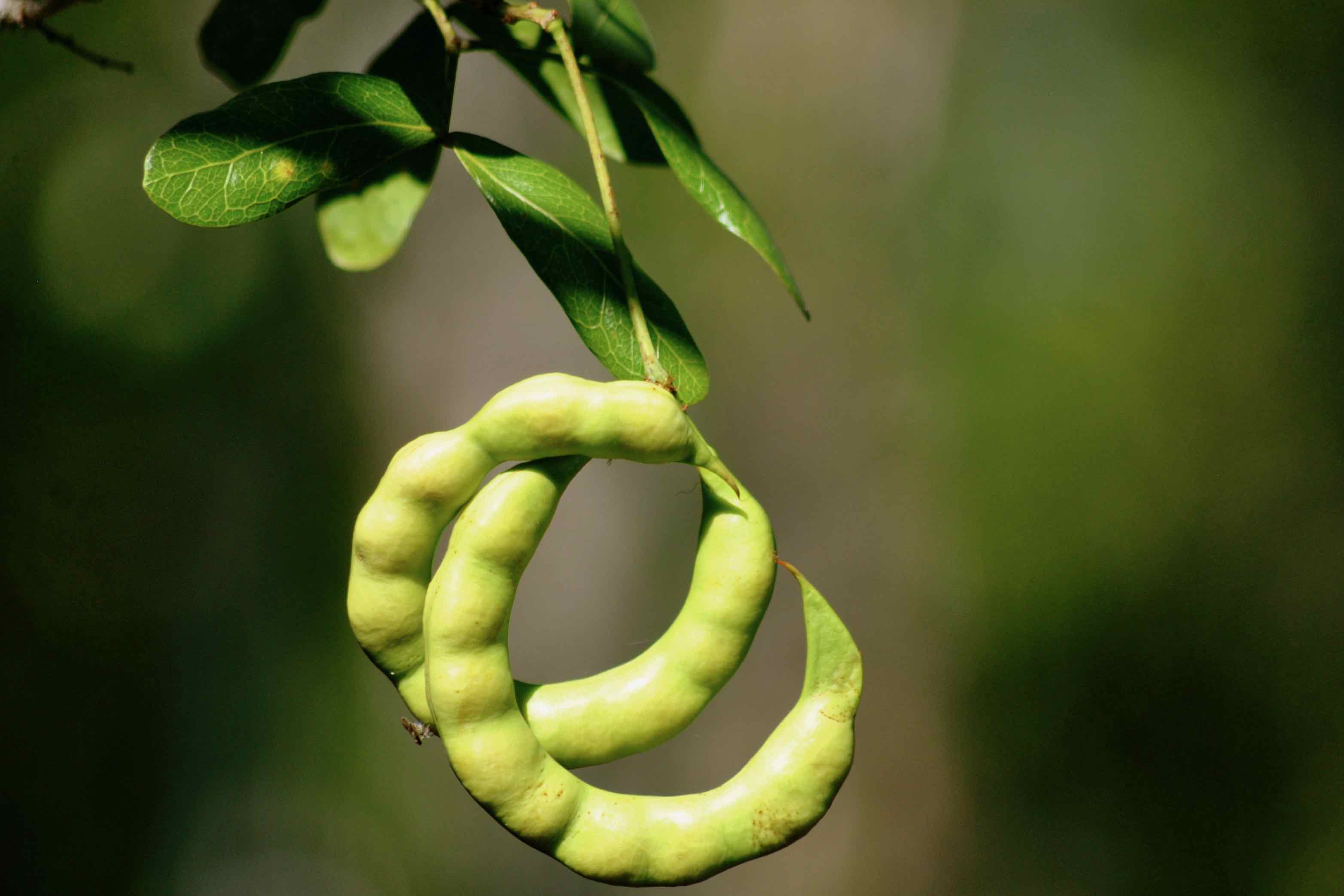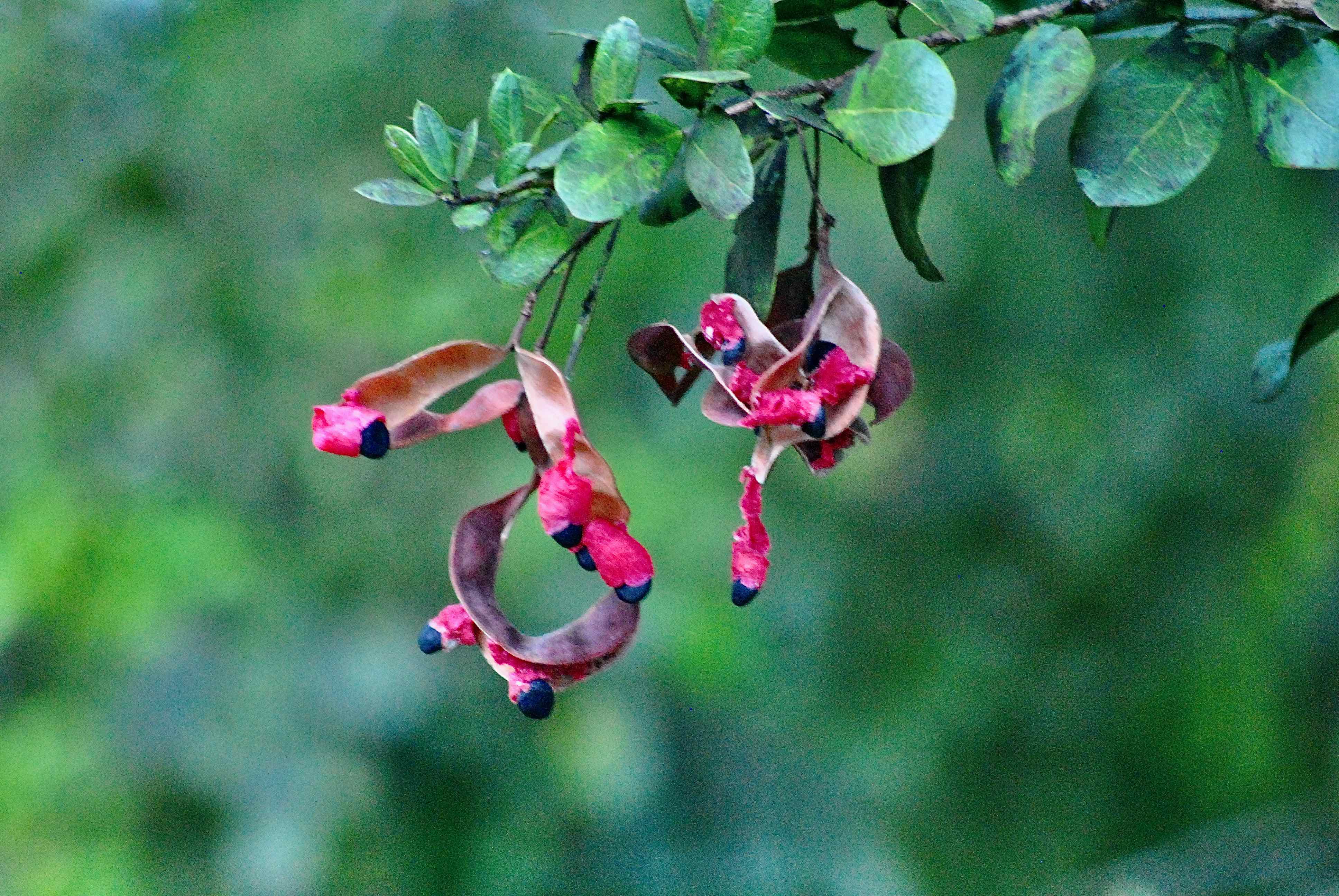
Keys blackbead, photographed at Bill Baggs Cape Florida State Park, Key Biscayene, Miami Dade County, in September 2016.
The name is a tad misleading. Keys blackbead, Pithecellobium keyense, does indeed grow in the Florida Keys, but it's also found thoughout South Florida as far north as Martin County and occasionally along Florida's West Coast. It does, however, produce seeds that look like black beads.
Keys blackbead is shrub or small tree distinguished by twisting, coiling pods as its fruit. The pods open up when ripe, revealing a fleshy red interior and small black seeds, the black beads, if you will.
It's a Florida native, found only in Florida among the 50 states. It's also native to the Bahamas, Cuba, Mexico and Central America. Keys blackbead has threatened status in Florida but it is fairly common in coastal thickets and hammocks, particularly on the Atlantic side of the state. Its status as threatened could be due to the relative scarcity of its favored habitats. The Institute for Regional Conservation in Delray Beach considers Keys blackbead secure in South Florida.
As we said, Keys blackbead is a shrub or small tree generally growing to eight to 15 feet tall but capable of hitting 20 or more. It tends to have a narrow trunk, with rough bark and many branches. It has pinnately compound leaves, meaning the leaflets that make up the leaves are themselves compound.
The flower is powderpuff-like, white or deep pink — the IRC says the color tends to vary according to geography, more white on Florida's mainland, more pink in Keys. It blooms year round, but peaks in spring into summer, the flowers eventually giving way to those curled pods. The combination of the flower and the pods make Keys blackbead attractive as a landscaping option.
The beans aren't edible but the red fleshy part to which the seeds are attached, called the aril, is. The late ethnobotanist Daniel Austin, however, said the flavor of the aril can vary widely, from sweet to sharp and bitter. He said the aril might taste better when it's white — before the pod is fully ripe — but he said he only tried it when it was red.
According to Austin, Keys blackbead is rich in tannins, and has been used to stop bleeding. In the Bahamas, leafy twigs are chewed or used to make a tea to stop bleeding three or four months into a pregnancy. Those black seeds are strung together to make jewelry.
Keys blackbead's thickets-like canopy provide cover for a variety of animals. Doves, northern mockingbirds and and the rare white-crowned pigeon dine on the seeds. In return for the meal, the birds help spread the seeds. It is host to the cassius blue butterfly and the giant orange sulphur butterfly and is a source of nectar for a host of other species, including the exceedingly rare Miami blue.
Keys blackbead is available from some commercial nurseries and is used as an accent shrub or tree, or as part of a buffer.
Other common names for Keys blackbead include Florida Keys blackbead, blackbead, ram's horn, particularly in the Bahamas, and It is a member of Fabaceae, the pea family.
Bill Baggs Cape Florida State Parke,
Click on photo for larger image
U.S. Department of Agriculture Distribution Maps






